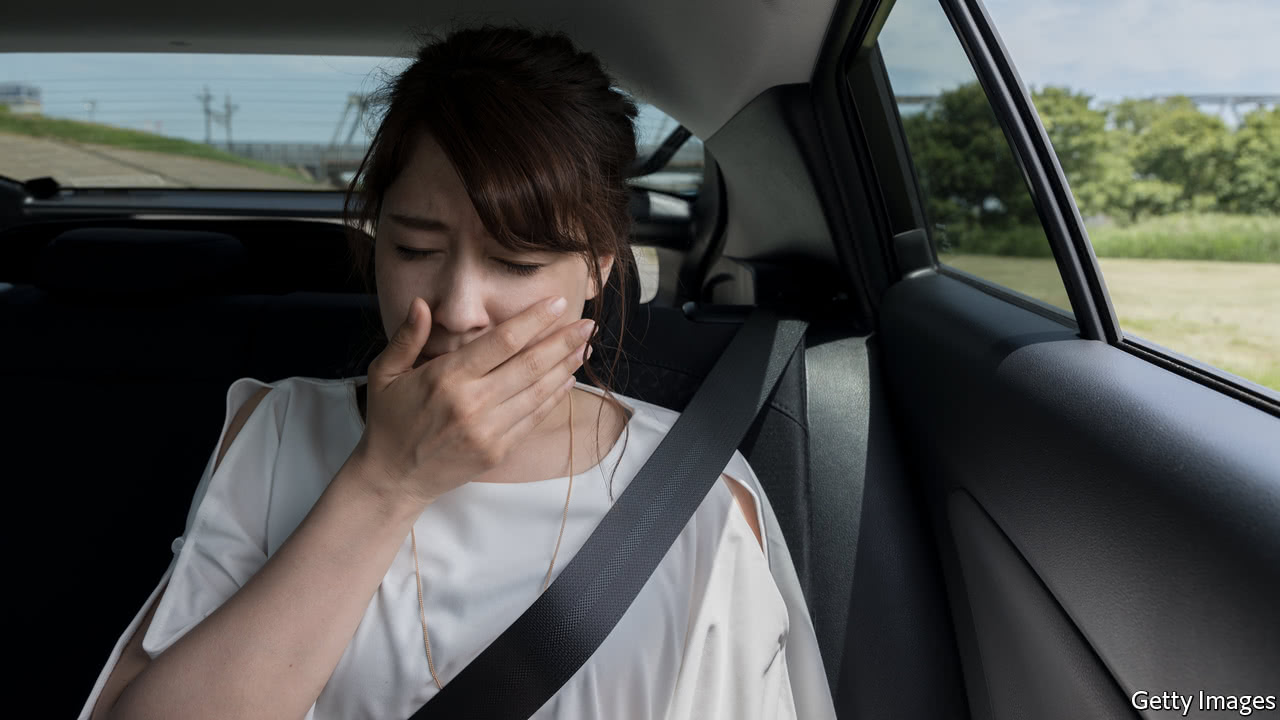EXPECTATIONS are high, among those boosting the idea of self-driving cars, that people will be able to do other things, such as reading, working on a laptop or having a nap, when riding in such a vehicle. But for many that is an unlikely prospect. Apart from those who have no intention of even getting into an autonomous car, which currently amounts to some 23% of Americans, another 36% would be willing to ride but would not take their eyes off the road, according to a study published in 2014 by the University of Michigan. Some of those people will be looking out of the window because it helps to avoid nausea, dizziness and vomiting, particularly if they are among the 5-10% of the population who regularly experience the unpleasant symptoms of motion sickness.
Help, though, is at hand. The selfsame authors of the Michigan study, Michael Sivak and Brandon Schoettle, who both work for the university’s Transportation Research Institute, have just been awarded a patent for a device that...Continue reading
Source: Science and technology http://ift.tt/2FD0SDR


EmoticonEmoticon